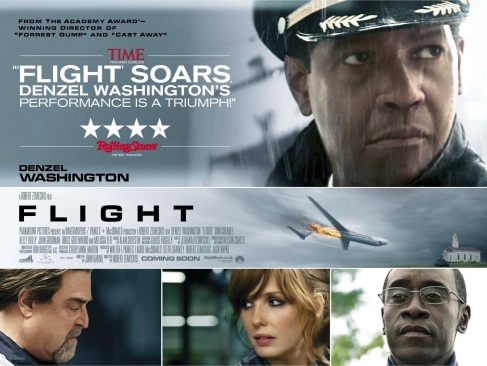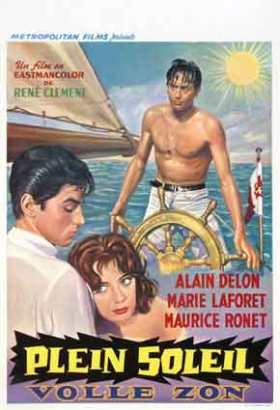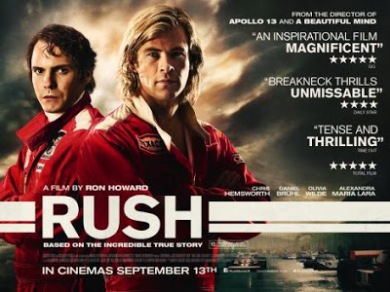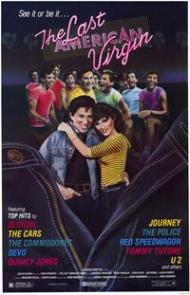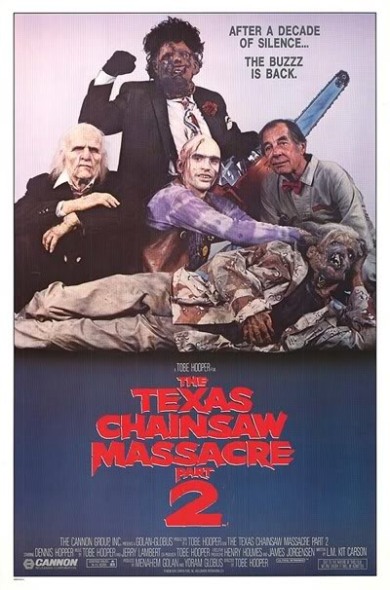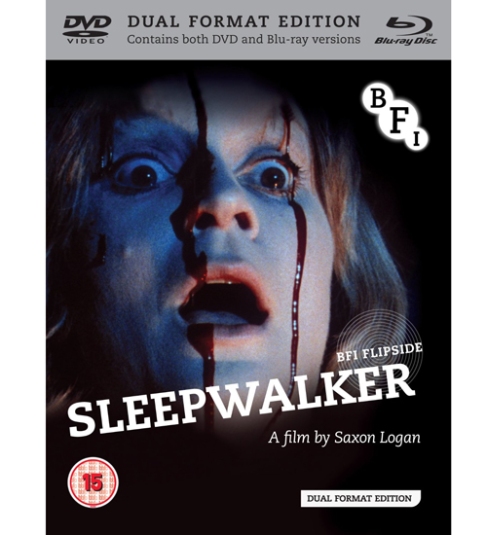The wild and weird output of the landmark Italian horror/thriller director Dario Argento can neatly be split up into three chapters.
The middle and most famous chapter, from 1975’s Deep Red to 1987’s Opera, is heralded by those who love him as one of the all-time great runs of genre cinema, films of such verve, idiosyncratic extremes and horrific beauty that it’s no wonder they’ve inspired the kind of intense devotion that true cults are made of.
The third chapter, which covers everything from 1989’s Romero team-up Two Evil Eyes right up until now, is where Argento’s mojo starts to slip away and we get a much spottier output, some of it good, some of it bad.
Then there was the first chapter, when Argento was just starting out. In this period he delivered three fine thrillers that you could (and I try not to, but I ultimately do) regard as mere build-ups for what was to come, but they also mostly work very well as films in their own right. They’re often referred to as ‘The Animal Trilogy’ for no other reason than their titles. Those titles by the way are just so much fancy window-dressing – they sound cool, mysterious and unique, but they barely relate to the actual bloody films, bar a shoe-horned reference here and there. Compared to Argento’s golden period, these films are far more modest in their ambitions and impact, but something like 1969’s debut The Bird with the Crystal Plumage is actually a pretty neat entry-point for those who aren’t at all sure about how to approach this most extreme of filmmakers. What’s interesting about Bird is not only how relatively normal it is for an Argento film but also how many of his motifs and themes were right there from the start. Scary paintings, unreliable memories, helpless murder witnesses, obsessed protagonists, unique cinematic tricks, cats – it’s all here. The seeds were being sown.
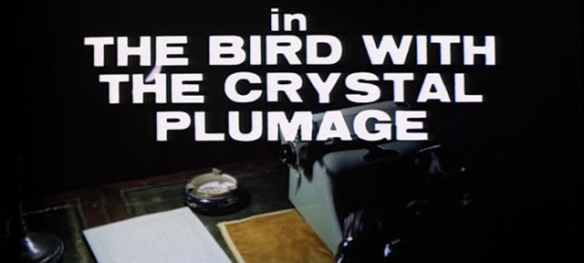
The plot involves blocked writer Sam Dalmas (Tony Musante) witnessing the stabbing of a woman in a museum by a mysterious black-clad assailant. He’s unable to help because he’s trapped in-between two sets of glass doors (Argento would take this motif of helpless watching to one hell of an extreme in 1987’s Opera), but nevertheless develops his own obsession with the mystery as the film proceeds, becoming amateur detective (another Argento regularity) and dancing perilously close to death as a result. Argento’s been criticised for his unbelievable characters, and some might balk at the scene when Sam and his girlfriend (Suzy Kendall) are in bed going over the clues (and various grisly crime scene photos) with an enthusiastic glee that surely no sane person would adopt if any of this were real. But if you consider that Argento could be letting his characters approach the case in the same way a viewer would approach a mystery film, then it almost makes some kind of perverse sense. Sam and his girlfriend’s reactions are almost like if you and I were going over the plot of say, a TV crime series the day after it had been screened. This might put some viewers off though for being too remote, and not how people in real life would react, but Argento and ‘real life’ have always been a tricky combination. There’s also a bit earlier Sam is walking home (down a beautifully eerie, foggy street) and is almost hacked by the killer – he pretty much shrugs it off and later relays the previous night and day’s events with a wry dismissal. Blimey. With stuff like that, you’re either happy to go along for the ride or you aren’t. Besides, this is nothing compared to the infamously odd scene in Opera where the heroine, having just been forced to watch her boyfriend get a knife up through his jaw, behaves if she’s only mildly inconvenienced. That really did annoy me.
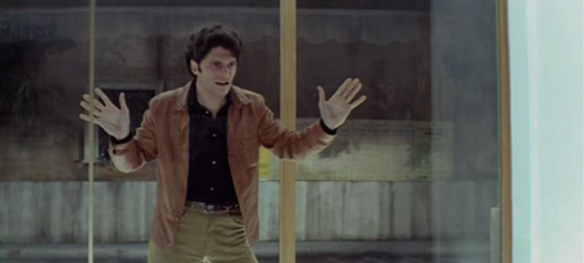
The violent extremes that Argento would become famous haven’t been reached yet – the first murder takes place entirely off-screen (!!!!), but there are still some unsettlingly nasty moments here – I imagine they were pretty damned strong for 1969, and to think that this director would only get more and more cruel, elaborate and gory from here on in! Also, one thing that differentiates this from Argento’s other gialli is that this has a reasonably happy ending – think of all the others from 1970’s Cat O’ Nine Tails onwards, they have a sting in the tail, are uncertain or are pretty damned bleak.
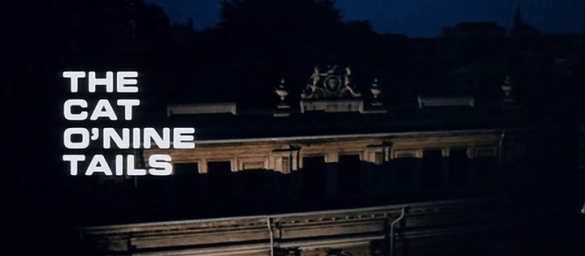
Speaking of Cat, this is an Argento film that has always been relatively easy to find in the UK – on video it was distributed by Warner Bros. It got a rental release in 1987 to presumably cash in on Argento’s cult popularity (the cover refers to Suspiria and more recent films like Creepers – aka Phenomena – and the Argento-produced Demons) and was also re-released as part of Warners’ very cool Terror Vision collection of horror movies. However, while Bird was a hit in the US, Cat was not. Oddly enough, for a director who has featured kitties in many of his films, Cat O’ Nine Tails doesn’t star any felines at all. This is very disappointing. The plot is a twisty-turny tale of murder, theft, kind-of incest, genetics etc. and while it is no Argento classic, I love it for its tension between giallo grotesquerie and Stateside potboiler. Even though it’s not set in the US, it nevertheless feels like an episode of a crime series like Columbo and The Streets of San Franscisco at times, understandable given that the latter’s star Karl Malden is one of the two leads here.
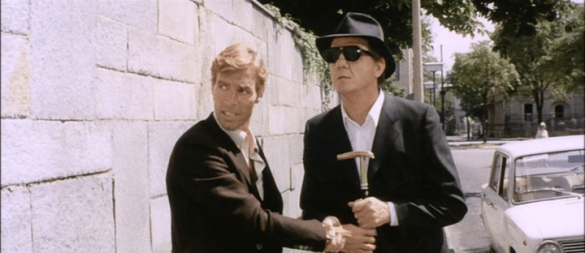
The plot – something about the criminality of the XXY chromosome and the killer’s desperate attempt to cover up that they have it – is even more convoluted and silly than the one for Bird, and hinges on implausibilities: the one that’s currently bothering me is the second murder: why would the killer bump off the photographer to conceal the fact that a murder took place originally? All you could see in the original photo was a hand! Talk about compounding the situation! To be honest, I’ve watched Cat three times now and the last two times I had forgotten who the murderer was, so this isn’t really a film that revolves around a particularly important revelation. Maitland McDonagh, author of the brilliant Argento book Broken Mirrors, Broken Minds, suggests that the film is a lot more fun if you already know who the killer is. I kind of agree with that – as a whodunnit, Cat is hardly a classic, but as an exercise in style and flair, it’s very enjoyable indeed. One thing that Argento has already upped his game with substantially is his handling of murder scenes. The first, a gruesome killing at a train station, is spectacularly nasty. We also get some pretty vicious first-person kills that are protracted, garish and pretty damned ugly. It’s also a cynical movie – note the way the photographers are distracted from the murder of Calabresi (the first victim) with the arrival of the celebrity arriving on the train for whom they were originally there for, and ‘Smile bitch, your train just killed a guy’ is one of the cruellest asides in any Argento film. In addition, it’s the little extra sadistic touches that stand out – after strangling the photographer, the killer slashes each of his cheeks. The vomit in Bianca’s mouth as she’s getting garotted. When the killer falls down the lift shaft, he/she attempt to hold onto the lift cables but that ends up causing so much friction that their hands begin to smoke – ouch!
And of course, this shot.
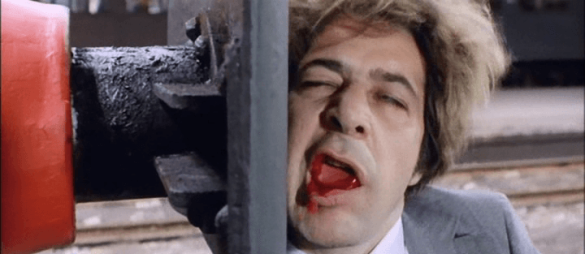
Argento, more than in Bird, is clearly interested in set-pieces and individual stand-out moments. Aside from the murders, we also get a car chase, an excursion to a cemetery, a suspense-scene involving poisoned milk and a funny scene at the barber’s that’s half amusing, half squirm-inducing. These are the stand out moments, but Argento joins the dots nicely thanks to charismatic performances from James Franciscus (soon to venture Beneath the Planet of the Apes) and Karl Malden, whose character in turn has a cute double-act with his niece. Catherine Spaak represents that rare thing in an Argento film – a love interest – and even though the dynamic between her and Franciscus isn’t as sharp or fascinating as the one between David Hemmings and Daria Nicolodi in Deep Red, it’ll do well enough, despite a love scene that’s so drained of heat it’s almost alien. Some neat uses of editing (like jumping back and forth in-between scenes as an arresting form of transition, the cutaways that suggest that Malden’s blind character has some kind of second sight), the memorably nasty (and oblique, if you go along with McDonagh’s theory that the killer wasn’t lying about his final victim) ending and great shot composition makes this is a relatively modest but still above-average slice of genre fare.

Accidental murder, phoney murder and out-and-out intentional murder, as well as self-loathing gender identity, filial hatred, infidelity and yes, feline abuse form the bulk of 1971’s Four Flies on Grey Velvet, which is the darkest and weirdest of the Animal Trilogy. It was given some kind of Holy Grail status over the decades due to how rare it was to track down but don’t get excited, this flawed film is most definitely not a ‘lost masterpiece’ as the cover of the eventual Blu-Ray excitedly release claimed it to be. Still, I like it for the most part – it sees Argento venture even further out there in regards to technique and idiosyncrasy. There are some tremendous moments to savour. The opening sequence blends music and visuals brilliantly as we get a prog-rock band in rehearsal whilst the camera explores a guitar by perching on the top of its neck or even occupying a space INSIDE it – we see the hand strumming the strings! There’s a great protracted suspense scene as a doomed maid finds the zoo she’s in becomes deserted and, as she’s pursued by the killer, seems to turn into some kind of cobwebbed catacomb! The final scene proves you can make anything beautiful as long as you add slow-motion and Morricone. Fans of Argento’s later work will notice little touches here and there that he’s repeated later on. Puppets, slow-motion bullets, that sort of thing. As for the absolutely insane method of detection that involves taking the last image seen by the victim before they died? Well, it comes out of nowhere so late in the narrative and is frankly complete twaddle, but it’s so mad that I can’t help but admire its nerve.
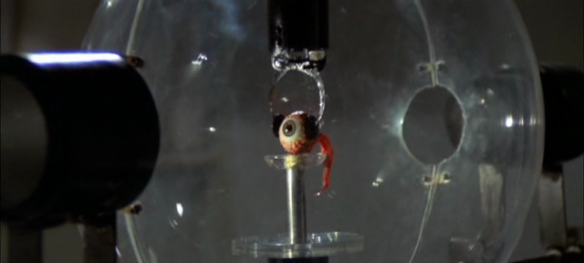
However, any resemblance to conventional thriller fare that his first two films might have had are slipping away, and to be honest, we’re occasionally in an awkward middleground between the immediately satisfying if relatively unambitious likes of Bird and Cat and the more successful craziness of Deep Red. Sometimes the film feels flat, and this isn’t helped by Michael Brandon in the lead character of Roberto, a drummer who thinks he’s killed someone (in a spectacularly abandoned concert hall) but hasn’t, yet is still guilty of being a dickhead. He certainly looks the part (and his resemblance to Argento himself has been noted) but he’s one of the director’s more charmless leads. His performance is most odd – at times he seems to be barely reacting to anything. His scenes with girlfriend Mimsy Farmer as she’s practically breaking down in front of him are some of the coldest you’ll ever see. Is it because Roberto is so remote he’s barely there, or is the actor not really trying? Incidentally, Brandon was some way down the list of preferred actors for the role – if you can believe it, the likes of James Taylor (yes, that one) and Tom Courtenay (yes, that one) were considered!
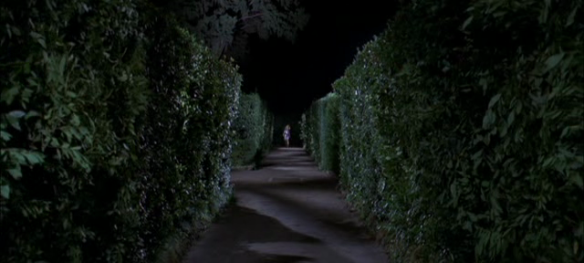
There’s also a would-be humorous element that doesn’t quite work – the bit when Roberto first encounters ‘God’ and this out-of-the-blue musical snippet of ‘Hallelujah’ appears out of nowhere is really bloody weird. Other broadly jokey bits, including a put-upon postman, don’t really work, though the digs at hipster arty-banter are quite amusing – I wish more of these prats had been killed off to be honest. The only light element that truly succeeds is the character of the gay private detective who is hedging his bets on a successful result after eighty-plus unsuccessful cases. It’s an affectionate performance and too sweet to be offensive or patronising, though some viewers might object to it. Nevertheless, he’s the most engaging character in the film. Incidentally, the fact that one of the reasons that a character in Cat O Nine Tails is suspicious because he’s he’s gay is the kind of dated stuff you have to take as a given in a film that’s almost fifty years old, I suppose.

In regards to subtext and themes, Four Flies is definitely the most complex of Argento’s first three films – the killer’s motivations are fascinating for example – but it’s difficult to get swept up in the whole affair mainly because the director has not found the confidence to go full-pelt with his vision. It’s simply not Argento enough. After an anomolous diversion into comedy for his fourth film (The Five Days of Milan), Argento would truly find his thriller-horror mojo from 1975 onwards.
One point of interest regarding these three films is the hiring of Ennio Morricone as composer – Argento’s collaborations with Goblin and its various members are his most celebrated, but the Morricone stuff has a magical appeal all of its own. Sometimes it’s generic, but othertimes it’s very nicely complementary, memorable and effective. Compared to the Goblin and Emerson stuff though, it’s just too damned normal!

